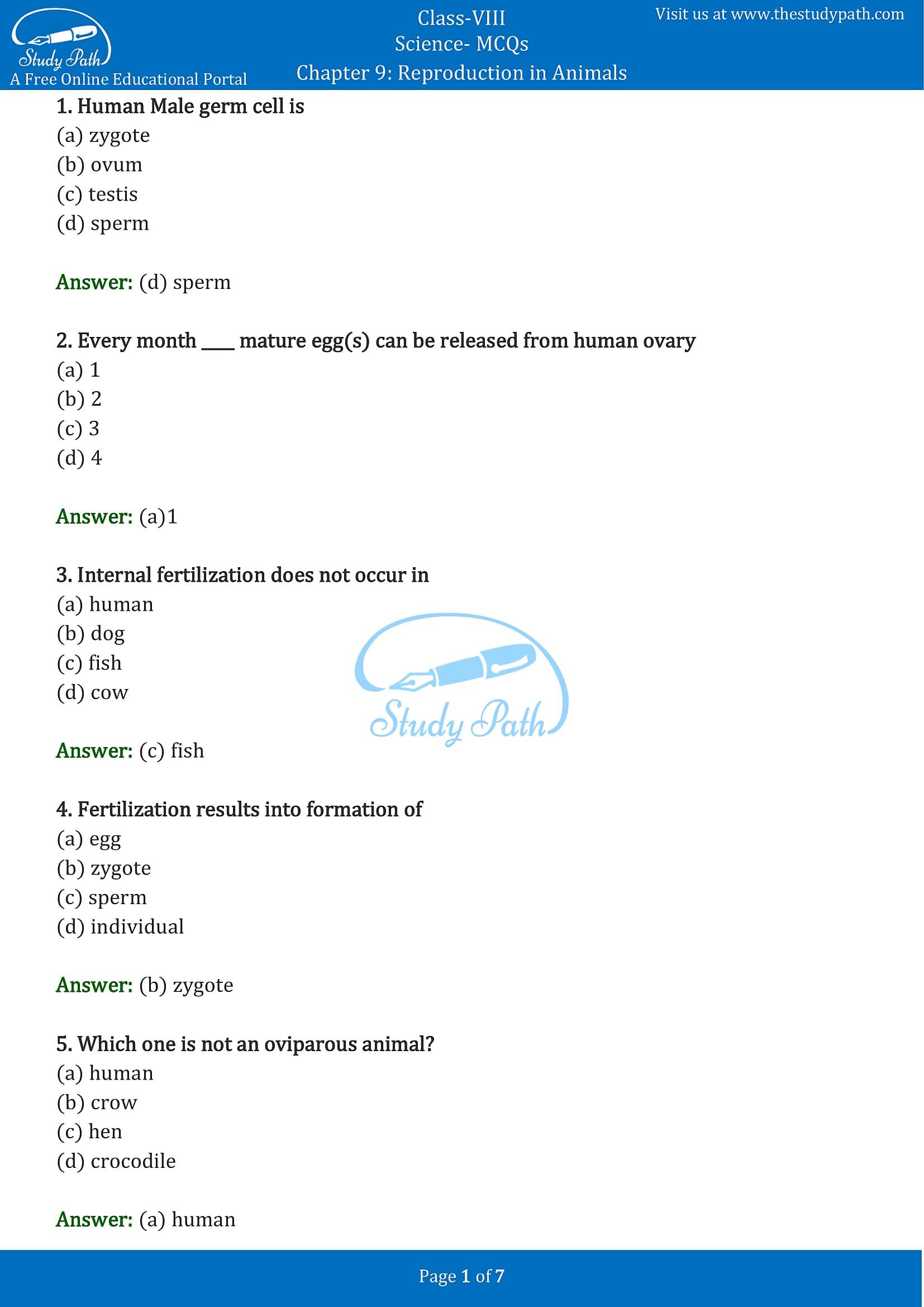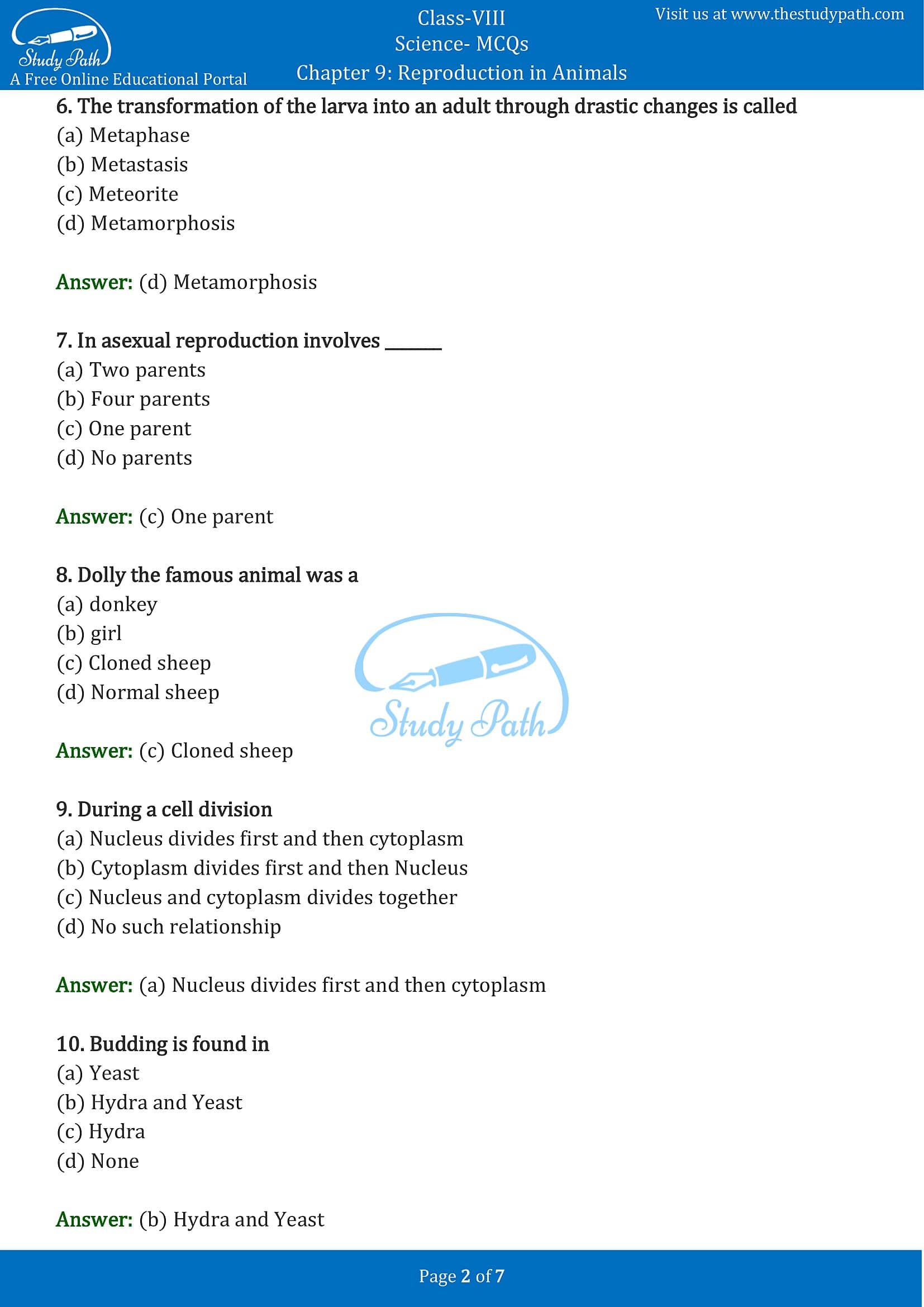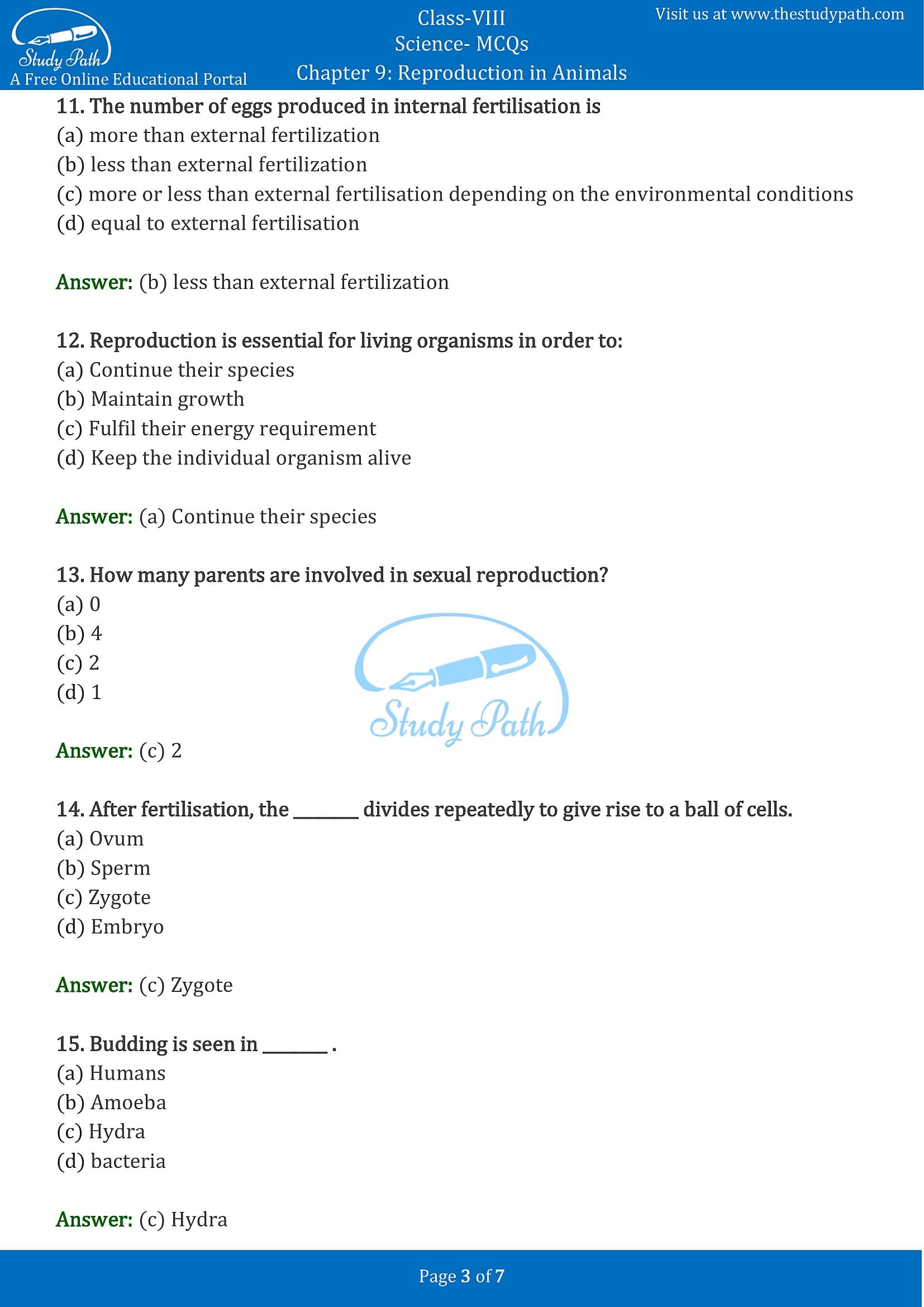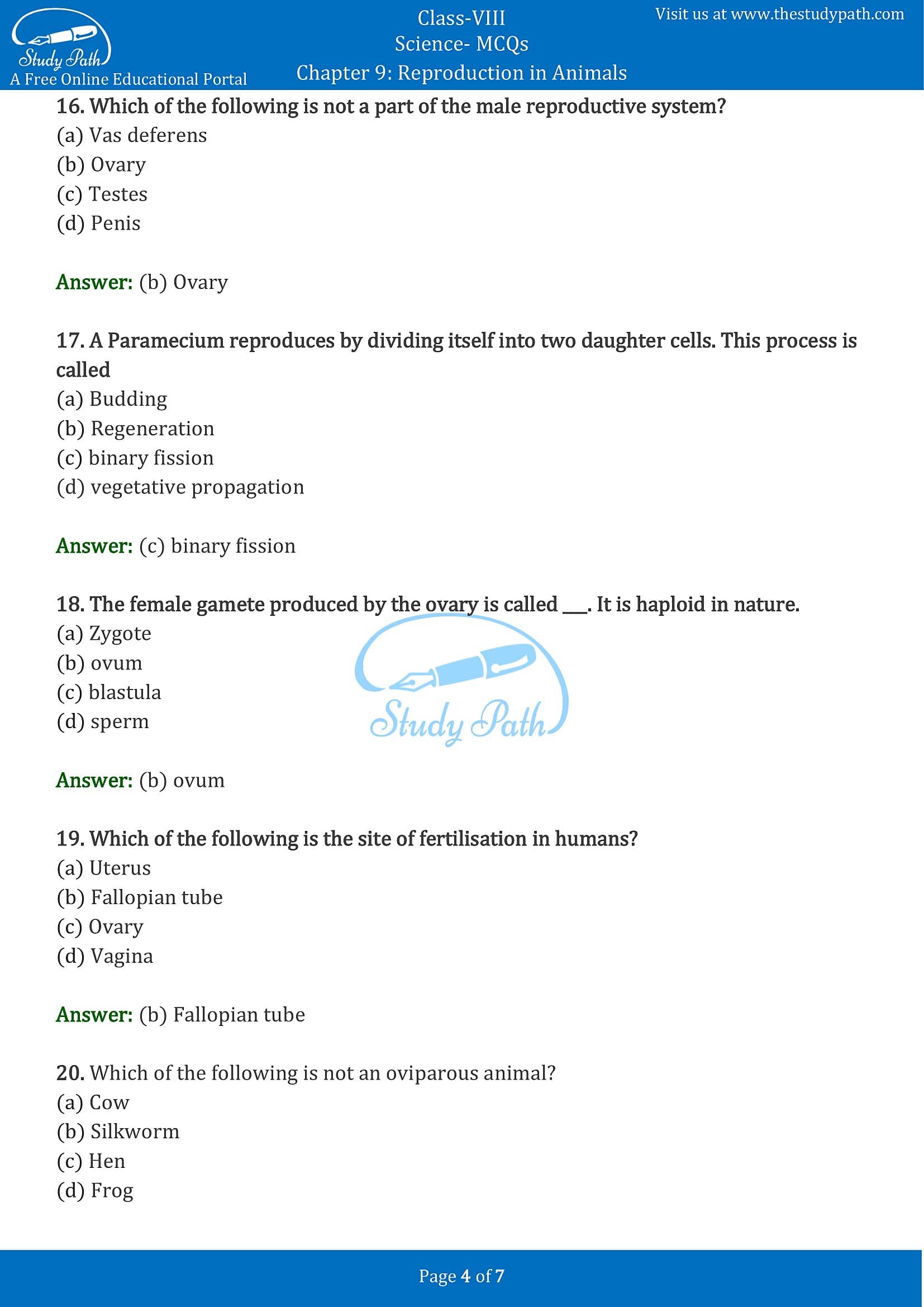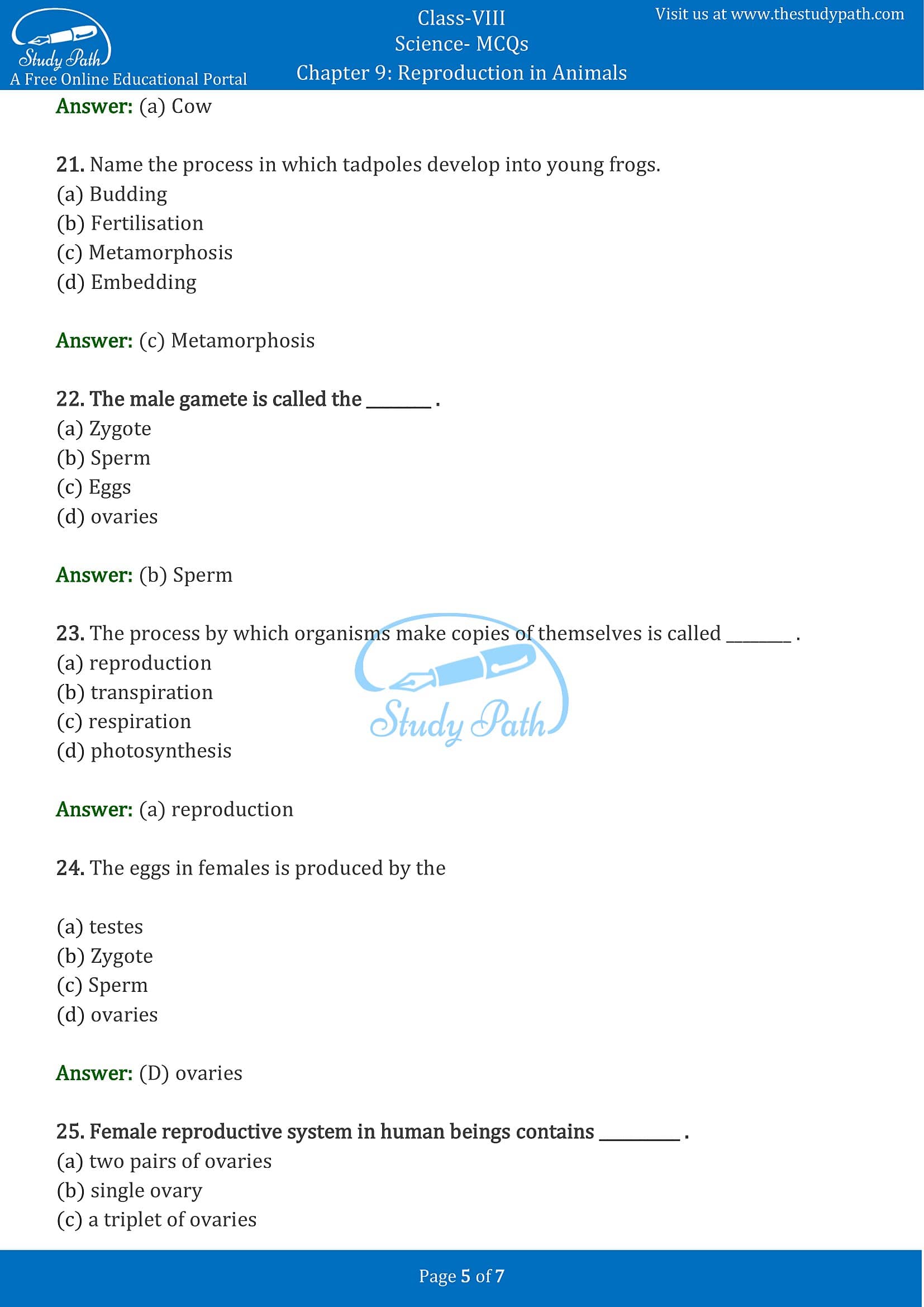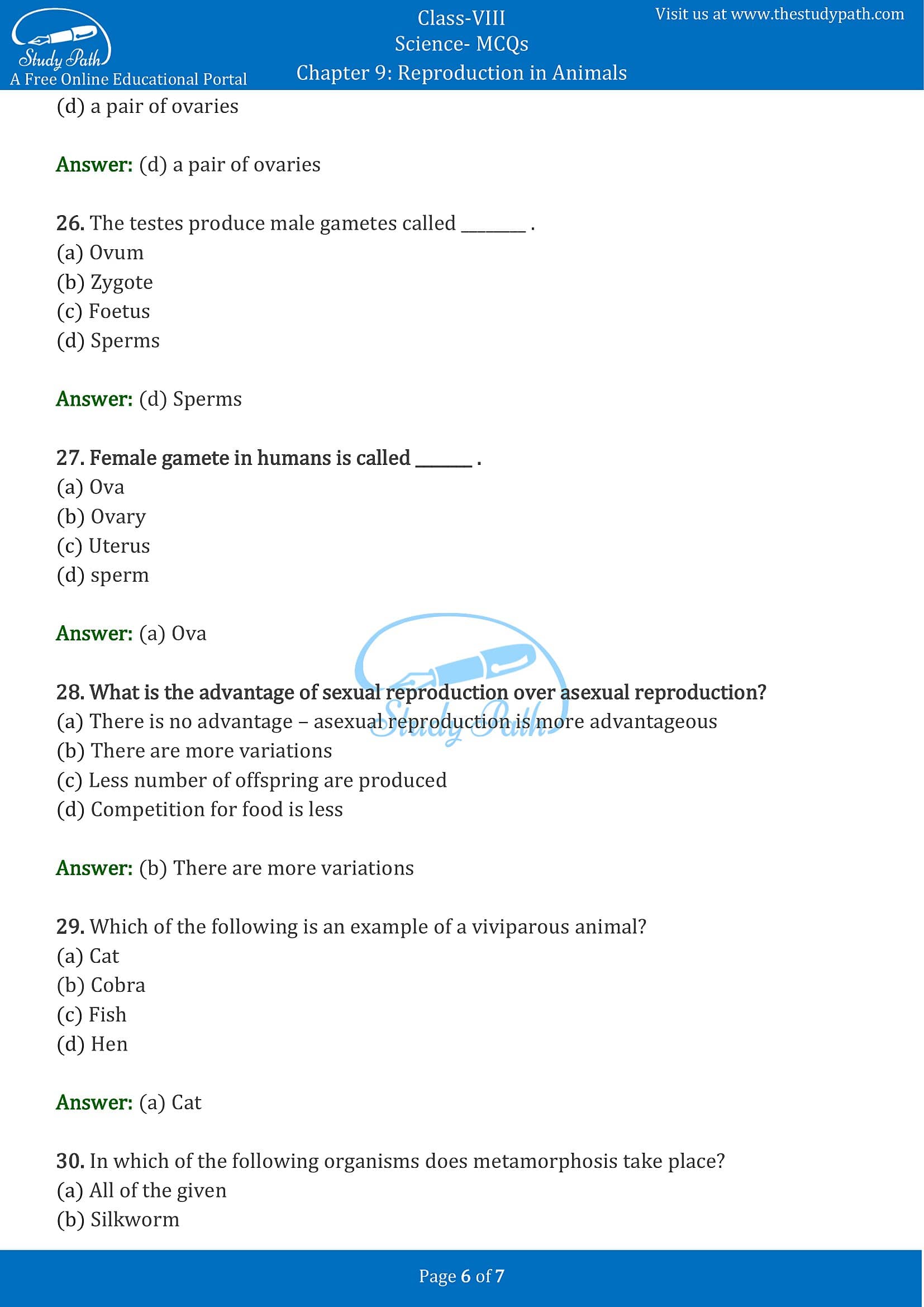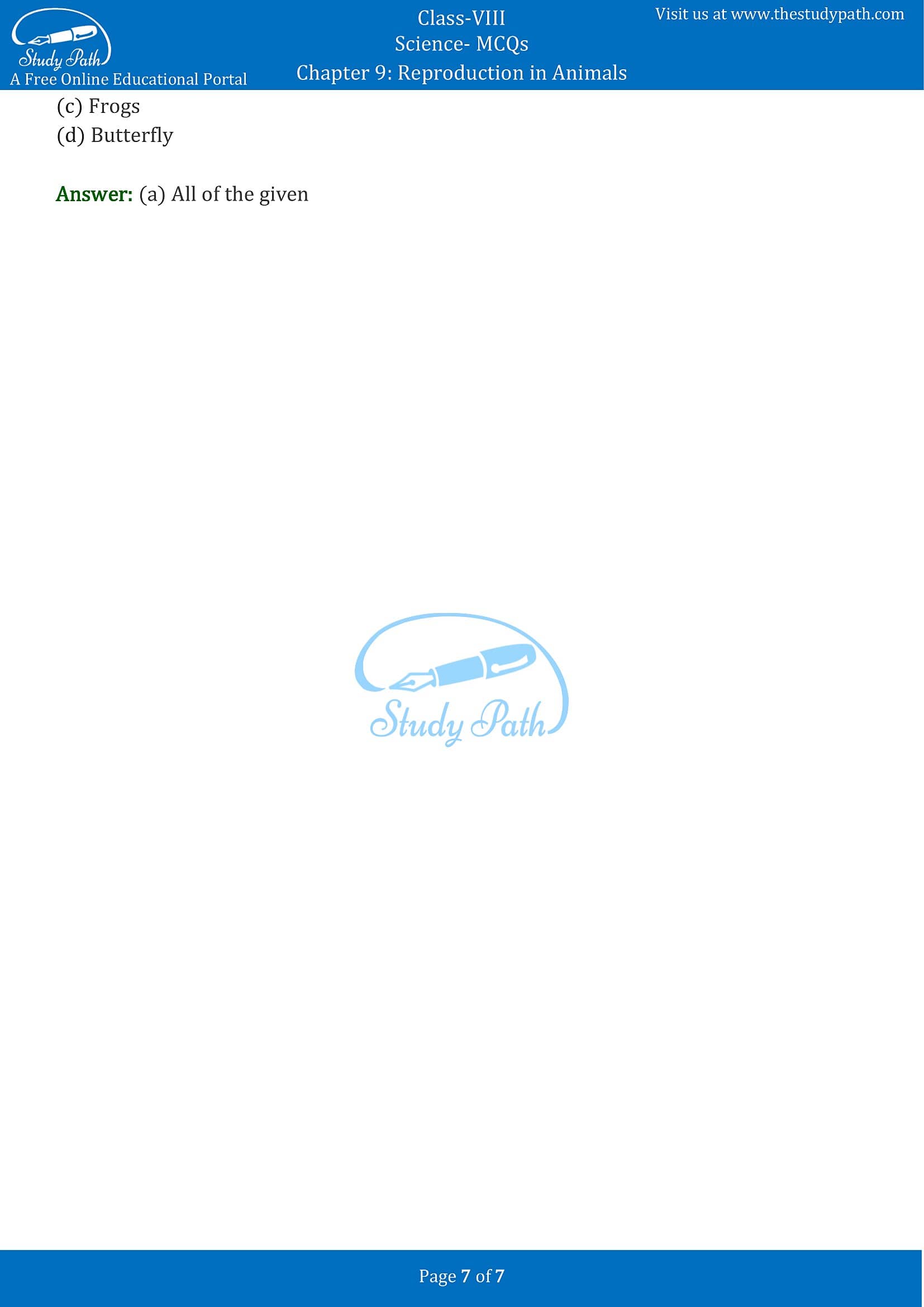Class 8 Science Chapter 9 Reproduction in Animals MCQ with Answers
Class 8 Science Chapter 9 Reproduction in Animals MCQ (Multiple Choice Questions) with Answers is available here in PDF format. CBSE Class 8 Science Reproduction in Animals Objective Questions helps the students to understand the concepts thoroughly and to score good marks. Practising these MCQs will help you to answer every question that is being asked in the exams.
At Study Path, you can download PDF of Multiple Choice Questions for Class 8 Chapter 9 Reproduction in Animals with Answers. These MCQs are prepared on the basis latest exam Pattern. Students can solve NCERT Class 8 Science Reproduction in Animals MCQs to know their preparation level.
Reproduction in Animals Class 8 MCQ with Answers
Multiple Choice Questions (MCQs)
1. Human Male germ cell is
(a) zygote
(b) ovum
(c) testis
(d) sperm
Answer: (d) sperm
2. Every month ____ mature egg(s) can be released from human ovary
(a) 1
(b) 2
(c) 3
(d) 4
Answer: (a) 1
3. Internal fertilization does not occur in
(a) human
(b) dog
(c) fish
(d) cow
Answer: (c) fish
4. Fertilization results into formation of
(a) egg
(b) zygote
(c) sperm
(d) individual
Answer: (b) zygote
5. Which one is not an oviparous animal?
(a) human
(b) crow
(c) hen
(d) crocodile
Answer: (a) human
6. The transformation of the larva into an adult through drastic changes is called
(a) Metaphase
(b) Metastasis
(c) Meteorite
(d) Metamorphosis
Answer: (d) Metamorphosis
7. In asexual reproduction involves _______
(a) Two parents
(b) Four parents
(c) One parent
(d) No parents
Answer: (c) One parent
8. Dolly the famous animal was a
(a) donkey
(b) girl
(c) Cloned sheep
(d) Normal sheep
Answer: (c) Cloned sheep
9. During a cell division
(a) Nucleus divides first and then cytoplasm
(b) Cytoplasm divides first and then Nucleus
(c) Nucleus and cytoplasm divides together
(d) No such relationship
Answer: (a) Nucleus divides first and then cytoplasm
10. Budding is found in
(a) Yeast
(b) Hydra and Yeast
(c) Hydra
(d) None
Answer: (b) Hydra and Yeast
11. The number of eggs produced in internal fertilisation is
(a) more than external fertilization
(b) less than external fertilization
(c) more or less than external fertilisation depending on the environmental conditions
(d) equal to external fertilisation
Answer: (b) less than external fertilization
12. Reproduction is essential for living organisms in order to:
(a) Continue their species
(b) Maintain growth
(c) Fulfil their energy requirement
(d) Keep the individual organism alive
Answer: (a) Continue their species
13. How many parents are involved in sexual reproduction?
(a) 0
(b) 4
(c) 2
(d) 1
Answer: (c) 2
14. After fertilisation, the ________ divides repeatedly to give rise to a ball of cells.
(a) Ovum
(b) Sperm
(c) Zygote
(d) Embryo
Answer: (c) Zygote
15. Budding is seen in ________ .
(a) Humans
(b) Amoeba
(c) Hydra
(d) bacteria
Answer: (c) Hydra
16. Which of the following is not a part of the male reproductive system?
(a) Vas deferens
(b) Ovary
(c) Testes
(d) Penis
Answer: (b) Ovary
17. A Paramecium reproduces by dividing itself into two daughter cells. This process is called
(a) Budding
(b) Regeneration
(c) binary fission
(d) vegetative propagation
Answer: (c) binary fission
18. The female gamete produced by the ovary is called ___. It is haploid in nature.
(a) Zygote
(b) ovum
(c) blastula
(d) sperm
Answer: (b) ovum
19. Which of the following is the site of fertilisation in humans?
(a) Uterus
(b) Fallopian tube
(c) Ovary
(d) Vagina
Answer: (b) Fallopian tube
20. Which of the following is not an oviparous animal?
(a) Cow
(b) Silkworm
(c) Hen
(d) Frog
Answer: (a) Cow
21. Name the process in which tadpoles develop into young frogs.
(a) Budding
(b) Fertilisation
(c) Metamorphosis
(d) Embedding
Answer: (c) Metamorphosis
22. The male gamete is called the ________ .
(a) Zygote
(b) Sperm
(c) Eggs
(d) ovaries
Answer: (b) Sperm
23. The process by which organisms make copies of themselves is called ________ .
(a) reproduction
(b) transpiration
(c) respiration
(d) photosynthesis
Answer: (a) reproduction
24. The eggs in females is produced by the
(a) testes
(b) Zygote
(c) Sperm
(d) ovaries
Answer: (D) ovaries
25. Female reproductive system in human beings contains __________ .
(a) two pairs of ovaries
(b) single ovary
(c) a triplet of ovaries
(d) a pair of ovaries
Answer: (d)a pair of ovaries
26. The testes produce male gametes called ________ .
(a) Ovum
(b) Zygote
(c) Foetus
(d) Sperms
Answer: (d) Sperms
27. Female gamete in humans is called _______ .
(a) Ova
(b) Ovary
(c) Uterus
(d) sperm
Answer: (a) Ova
28. What is the advantage of sexual reproduction over asexual reproduction?
(a) There is no advantage – asexual reproduction is more advantageous
(b) There are more variations
(c) Less number of offspring are produced
(d) Competition for food is less
Answer: (b) There are more variations
29. Which of the following is an example of a viviparous animal?
(a) Cat
(b) Cobra
(c) Fish
(d) Hen
Answer: (a) Cat
30. In which of the following organisms does metamorphosis take place?
(a) All of the given
(b) Silkworm
(c) Frogs
(d) Butterfly
Answer: (a) All of the given
At Study Path, you can also learn more about science chapter 9 Reproduction in Animals by accessing the free exhaustive list of study materials and resources related to the chapter such as NCERT Solutions, Important Questions and Extra Questions.
